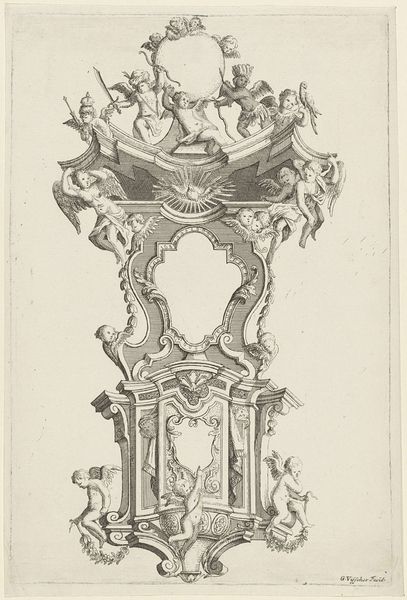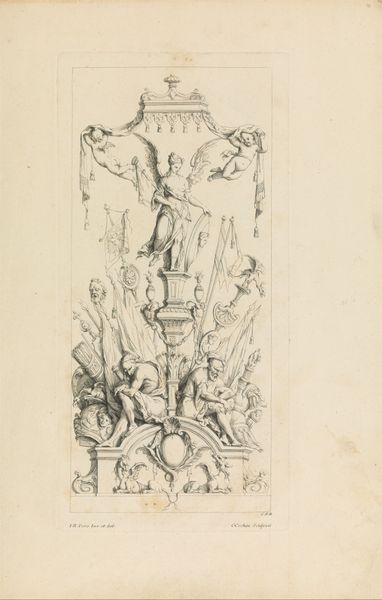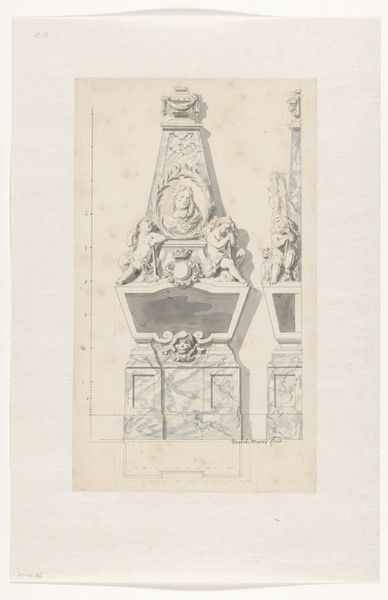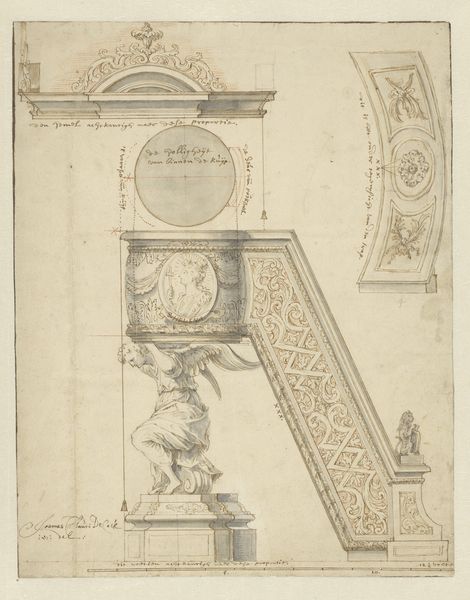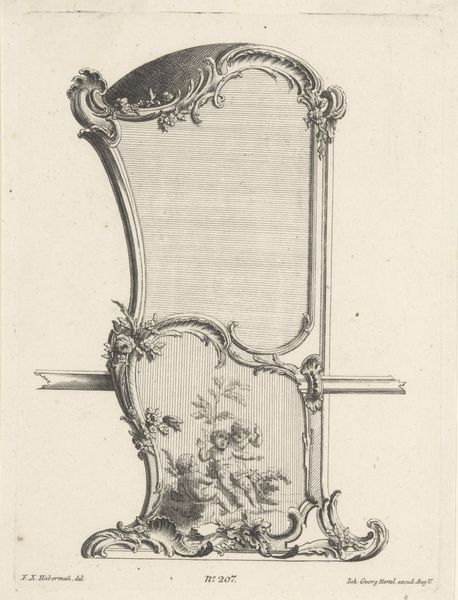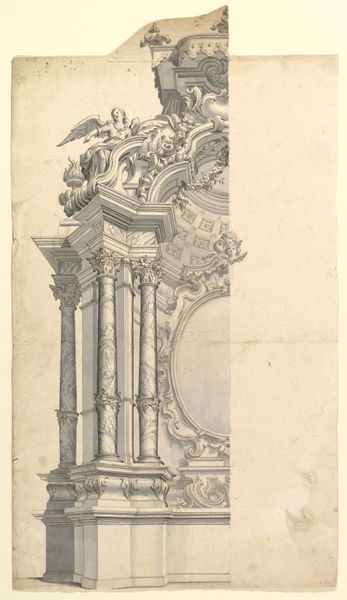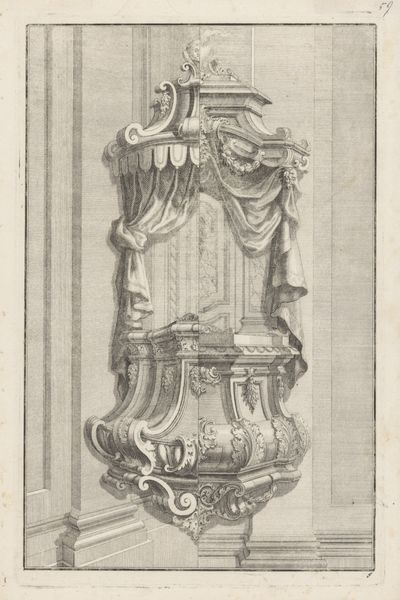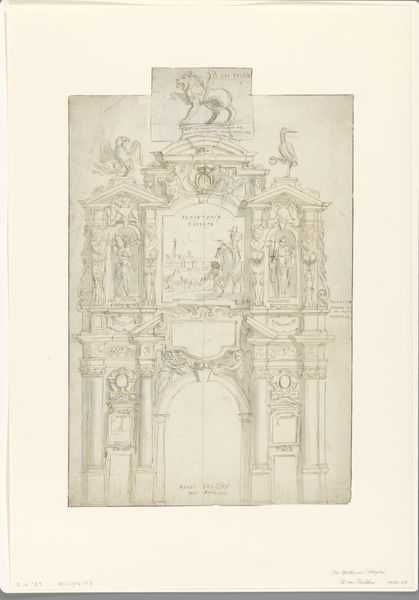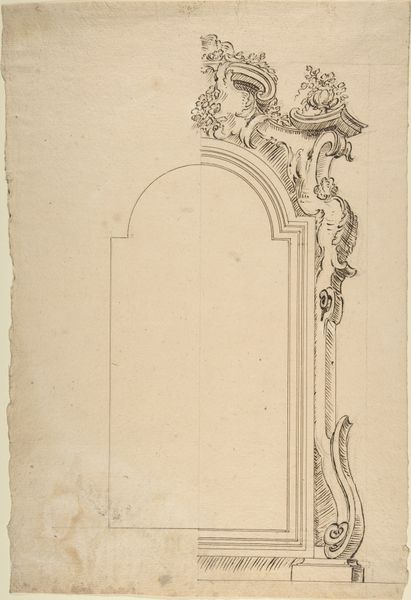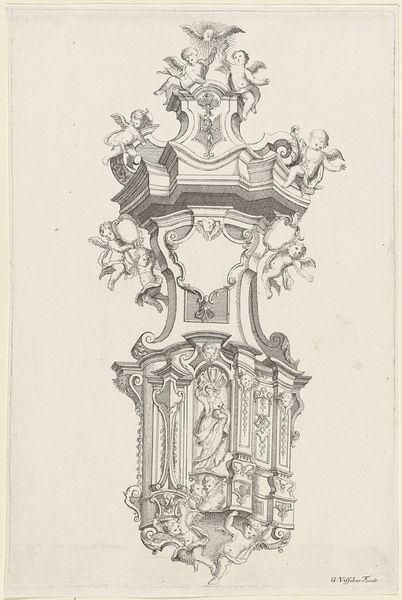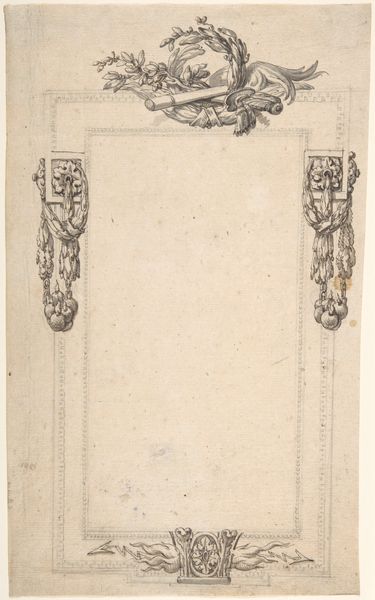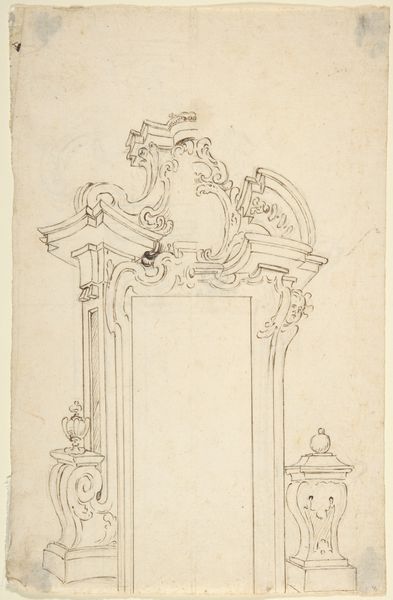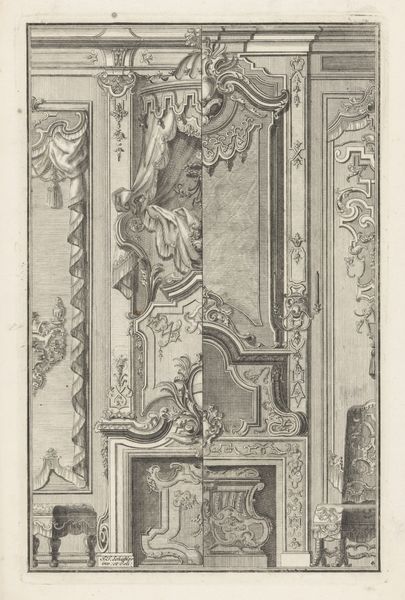
drawing, ink, architecture
#
drawing
#
baroque
#
form
#
ink
#
line
#
architecture
Dimensions: height 393 mm, width 271 mm
Copyright: Rijks Museum: Open Domain
Editor: Here we have Pieter (II) Verbruggen’s drawing in ink, “Ontwerp voor de preekstoel in de St. Annakapel te Antwerpen,” made sometime between 1687 and 1691. It’s a very ornate sketch. What compositional elements stand out to you? Curator: The baroque style is certainly evident through the dynamism of the figures and the dramatic curves. Notice how the line work itself, particularly in the swirling ornamentation, contributes to this sense of movement. The structure's ascending nature is interrupted and decorated by sculpted figures, suggesting an interruption of a simple geometric shape with embodied forms. Editor: I see what you mean about the interplay of structure and sculpture. Are there any particular aspects of line quality you find compelling? Curator: Indeed. Observe how the line varies in thickness and darkness, creating a sense of depth and shadow despite the monochromatic palette. Consider, too, the relationship between the structural lines, defining the pulpit’s form, and the freer, more gestural lines that define the figures. This interplay serves to animate the design, preventing it from feeling overly rigid. Editor: So, it’s the tension between rigid structure and dynamic ornamentation that gives the piece its energy? Curator: Precisely. Moreover, one must note how light permeates from around the forms, rather than emanates from a logical place within the composition, creating what one might consider a "holy glow." Consider what message the artist hoped to imbue this artwork with by applying a more divine approach. Editor: This approach gives me a whole new way to read architectural sketches. It's about form, space, and light creating drama beyond just depicting an object. Curator: Indeed, it is in considering these relationships of line, light and form that we may grasp a fuller understanding of the drawing's artistic intent and the success with which the artist meets their goals.
Comments
No comments
Be the first to comment and join the conversation on the ultimate creative platform.
